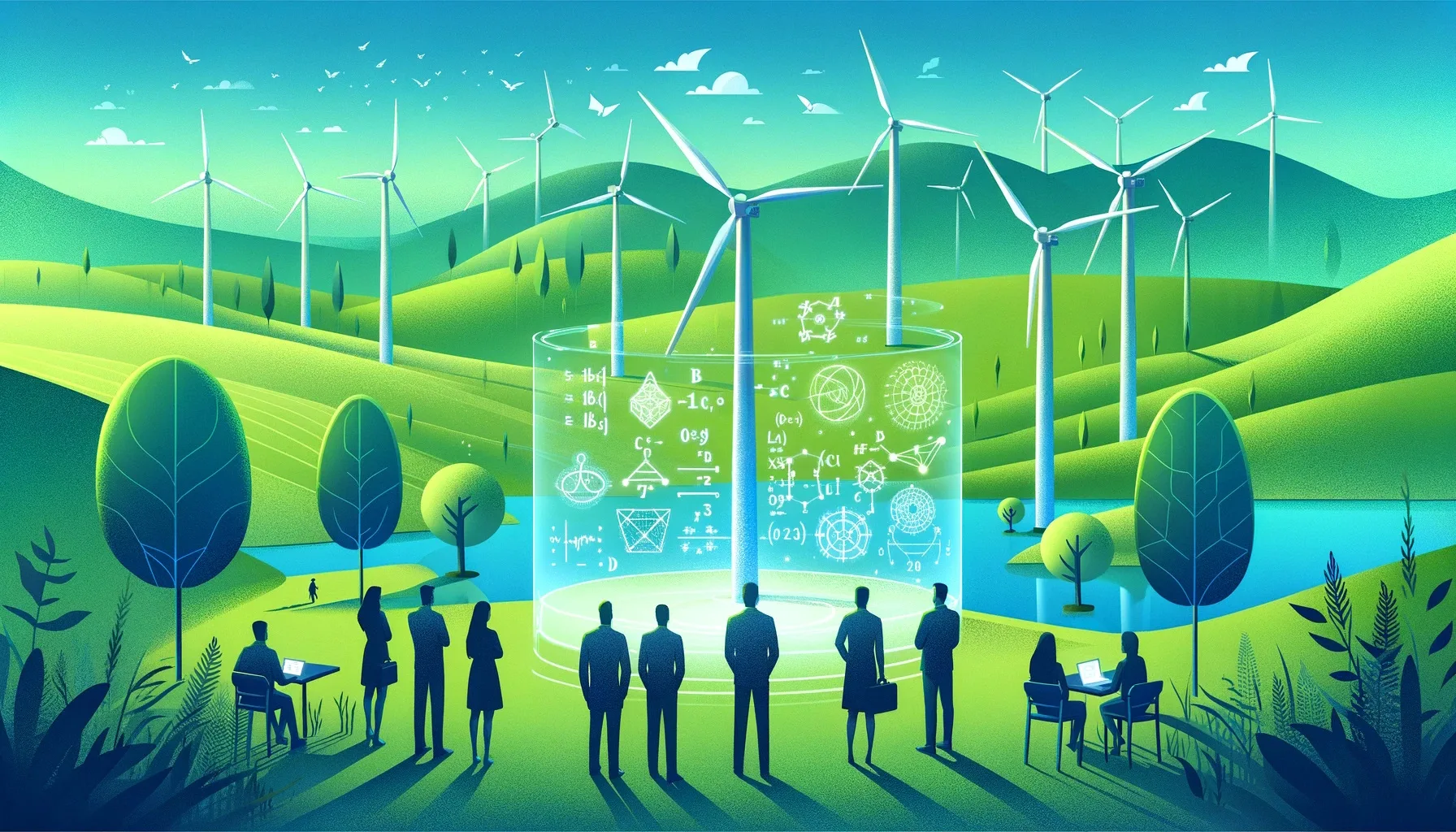In today’s world, green technologies are becoming increasingly popular due to their eco-friendly nature and energy efficiency. However, these technologies rely heavily on complex mathematical models that simulate various environmental conditions. These advanced mathematical models play a critical role in developing green technologies by providing accurate simulations of various scenarios.
One example of how mathematical models have been used to develop green technologies is with the design of wind turbines. The aerodynamics of wind turbines are highly complex, and advanced mathematical models are used to simulate their behavior under different weather conditions. This allows engineers to optimize the design of the turbine blades for maximum efficiency.
Another area where mathematical models have been applied is in developing energy-efficient buildings. These models allow architects and engineers to simulate various environmental conditions such as temperature, humidity, and airflow to design buildings that are comfortable and efficient to heat or cool.
Overall, the role of advanced mathematical models in green technology innovation cannot be overstated. These models provide a way for researchers and engineers to accurately simulate different environmental scenarios and optimize the design of their products for maximum efficiency. As green technologies continue to become more important, the use of these models will only increase in importance as well.
The Basics of Advanced Mathematical Models
Advanced mathematical models are essential tools for designing and optimizing green technology systems. These models allow engineers and researchers to simulate various environmental conditions, such as temperature, humidity, wind speed, and solar radiation, in order to test different design configurations.
These models help identify potential issues that may arise during the operation of a system, enabling engineers to make necessary adjustments before a product is developed or installed. Advanced mathematical models are essential for developing efficient and sustainable technologies that can help reduce our carbon footprint and protect the environment.
Overall, advanced mathematical models are crucial in developing green technology systems that can meet our energy needs while minimizing negative impacts on the environment.
One example of advanced mathematical models used in green technology development is the development of solar panels. Engineers use sophisticated simulation tools to model the behavior of photovoltaic cells under different environmental conditions, including temperature, irradiance, and humidity. This allows them to optimize the design of solar panels, maximizing their energy conversion efficiency while minimizing cost.
Another example is the development of wind turbines. Mathematical models are used to simulate the behavior of air flow around a turbine, allowing engineers to design blades with optimal shape and size for maximum power capture under different wind conditions. These models also help optimize the placement of wind farms to maximize energy production while minimizing environmental impact.
Overall, advanced mathematical models play an important role in the development of green technology, enabling researchers and engineers to optimize design, increase efficiency, and reduce cost for sustainable technologies that benefit society.
Challenges in Developing Advanced Mathematical Models for Green Technology
Despite the importance of advanced mathematical models in green technology development, there are several challenges associated with their use. One challenge is the complexity of environmental conditions that need to be simulated. For example, the behavior of wind turbines is heavily influenced by local wind speed and direction, which can vary greatly from one location to another. Another challenge is the lack of data on certain environmental parameters, such as extreme weather events, which may occur only a few times in a century.
Additionally, developing advanced mathematical models requires significant expertise in both mathematics and the specific field related to green technology. This expertise may not be available within all organizations that are working on green technologies, making it difficult for them to develop effective models.
Another challenge is ensuring the accuracy of these models, which often require sophisticated computer simulations. These simulations can take a significant amount of time and computing power, making them costly and time-consuming to produce. Finally, there may be challenges in communicating the results of these models to stakeholders, including policymakers and members of the public, who may not have the technical background required to understand the results.
Overall, developing advanced mathematical models for green technology is a complex process that requires significant expertise, resources, and communication efforts.
As environmental concerns continue to dominate global headlines, the demand for green technology innovations has never been greater. At the heart of these innovations lies the power of advanced mathematical models, which can help engineers and scientists design more efficient, sustainable systems. From predicting wind patterns to optimizing solar panels, these complex models are essential tools in the development of clean energy technologies.
However, despite their importance, there are still significant challenges associated with using these models effectively. For one, they require vast amounts of data and computational power, which can be expensive and time-consuming to collect and process. Additionally, even the most sophisticated models may not always accurately reflect real-world conditions, leading to unexpected results or failures.
Despite these challenges, it is clear that advanced mathematical models will continue to play a crucial role in the development of green technologies in the future. As society continues to strive towards sustainability and reduced carbon emissions, there will be an increased demand for energy-efficient technologies that are designed using advanced mathematical models. From optimizing the performance of renewable energy systems to developing more efficient transportation networks, these models will be essential tools in driving innovation and creating a cleaner, greener world for generations to come.
It is evident that green technology innovations heavily rely on advanced mathematical models to optimize their designs and identify potential issues before they arise. These models allow researchers and engineers to simulate various environmental conditions in order to create energy-efficient technologies that are designed to benefit both society and the planet. As such, there will continue to be a growing demand for green technology innovations that prioritize sustainability and efficiency. Ultimately, it is through these advanced mathematical models that we can ensure a brighter future for generations to come.


